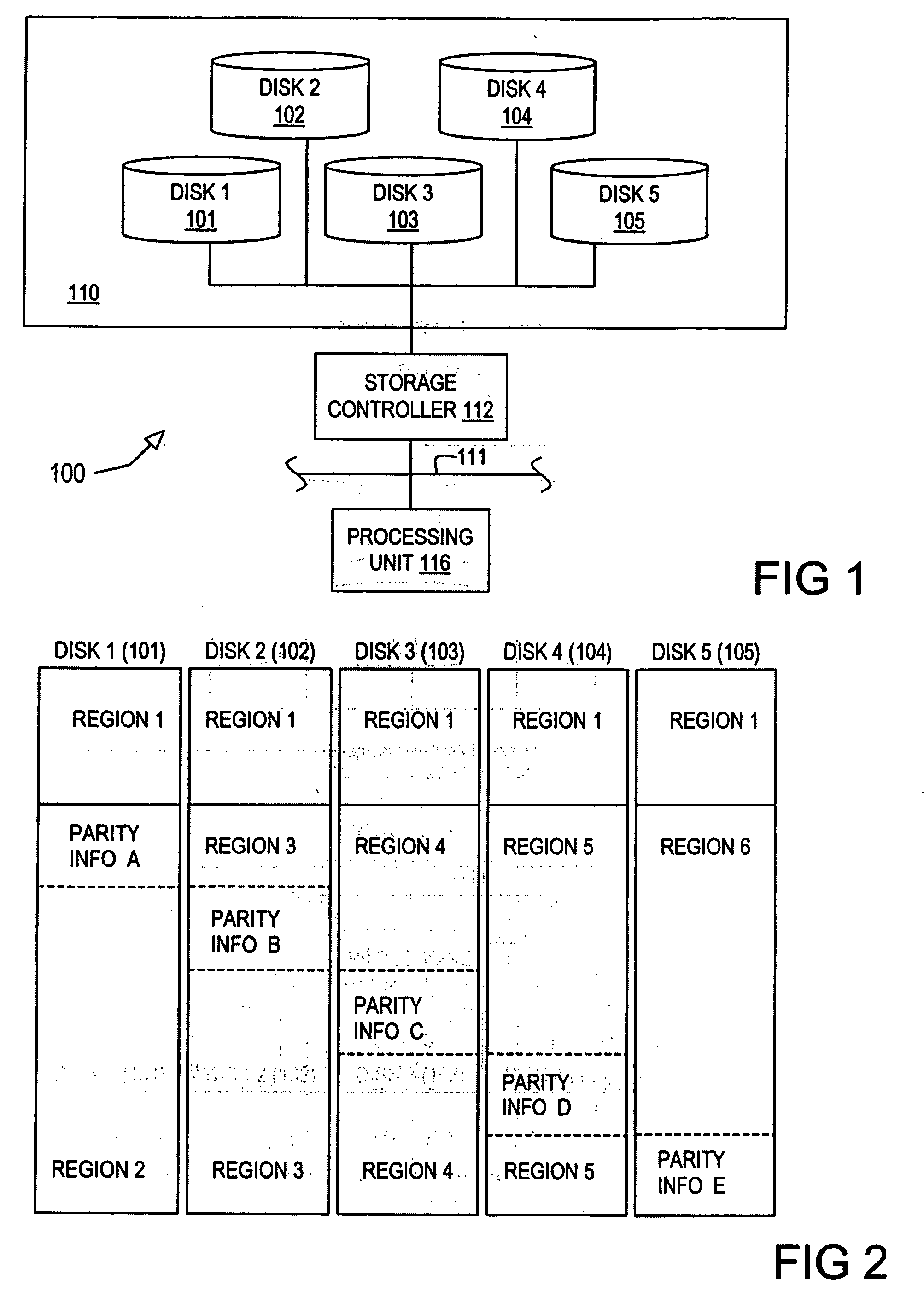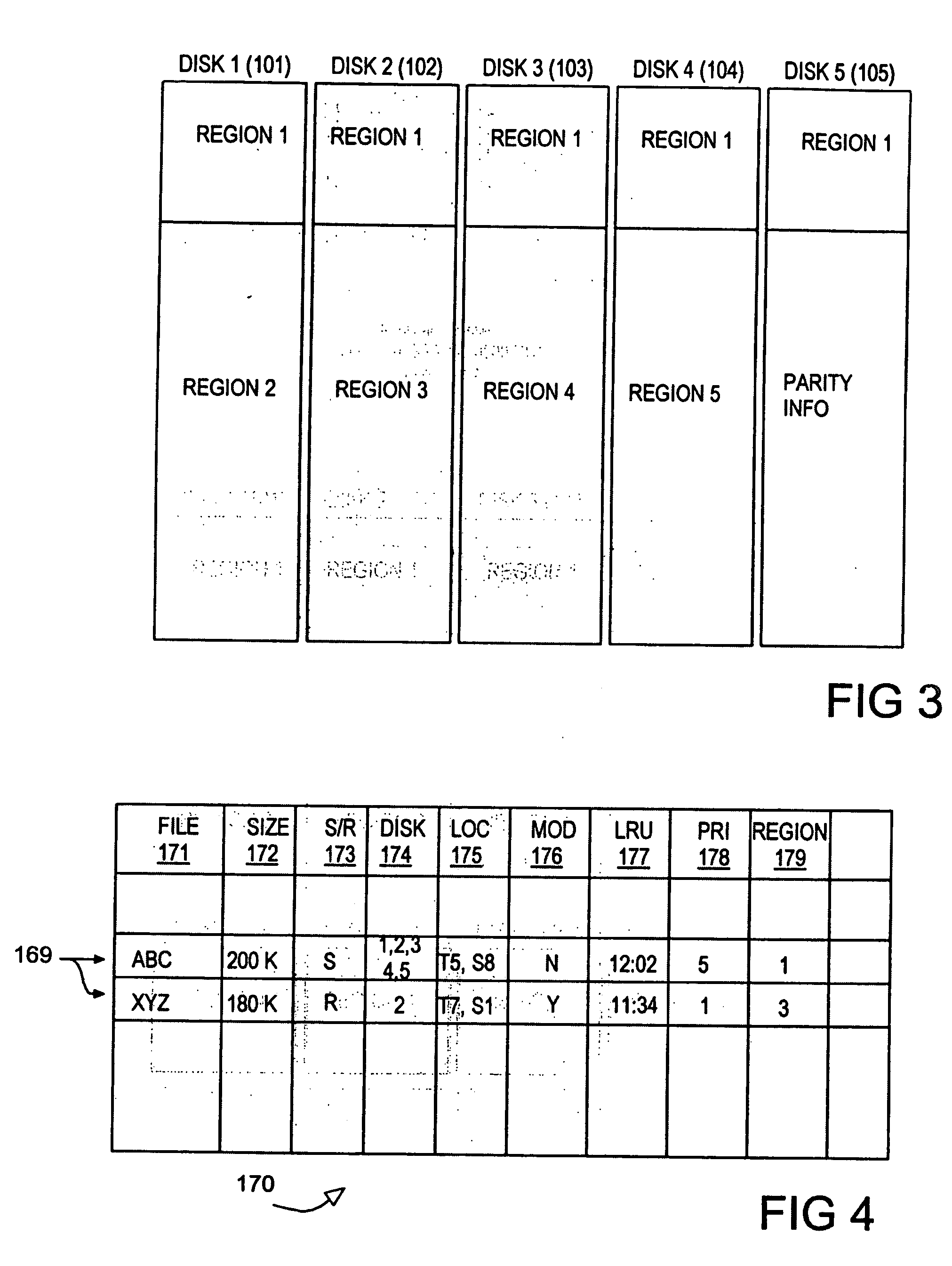Multiple disk, variable RPM data storage system for reducing power consumption
a data storage system and variable rpm technology, applied in the field of data storage systems, can solve the problems of not describing a mechanism for considering individual disks, energy consumption has received more attention in recent years, etc., and achieve the effect of minimizing the power consumption of the disk subsystem
- Summary
- Abstract
- Description
- Claims
- Application Information
AI Technical Summary
Benefits of technology
Problems solved by technology
Method used
Image
Examples
Embodiment Construction
[0017] The present invention contemplates a system and method for reducing energy consumption in a server-class or other multiple-disk storage system that employs dynamic RPM disks (DRPM) and replication of popular data. A disk array controller considers not only the location of data in the disk array when servicing a request for popular data, but also the current workload of the disks in the array. The disk controller distributes request to the disks to balance the workload across the active disks in the array. The disk controller monitors the overall workload for the array and, based on this, selects an operating speed for all disk in the array. The chosen speed is the lowest possible speed that allows the array to maintain its performance criteria. By maintaining all active disks at (or close to) a common RPM that is the minimum RPM sufficient to maintain performance, the system minimizes energy consumption for any given level of performance requirements and loading.
[0018] Turni...
PUM
 Login to View More
Login to View More Abstract
Description
Claims
Application Information
 Login to View More
Login to View More - R&D
- Intellectual Property
- Life Sciences
- Materials
- Tech Scout
- Unparalleled Data Quality
- Higher Quality Content
- 60% Fewer Hallucinations
Browse by: Latest US Patents, China's latest patents, Technical Efficacy Thesaurus, Application Domain, Technology Topic, Popular Technical Reports.
© 2025 PatSnap. All rights reserved.Legal|Privacy policy|Modern Slavery Act Transparency Statement|Sitemap|About US| Contact US: help@patsnap.com



